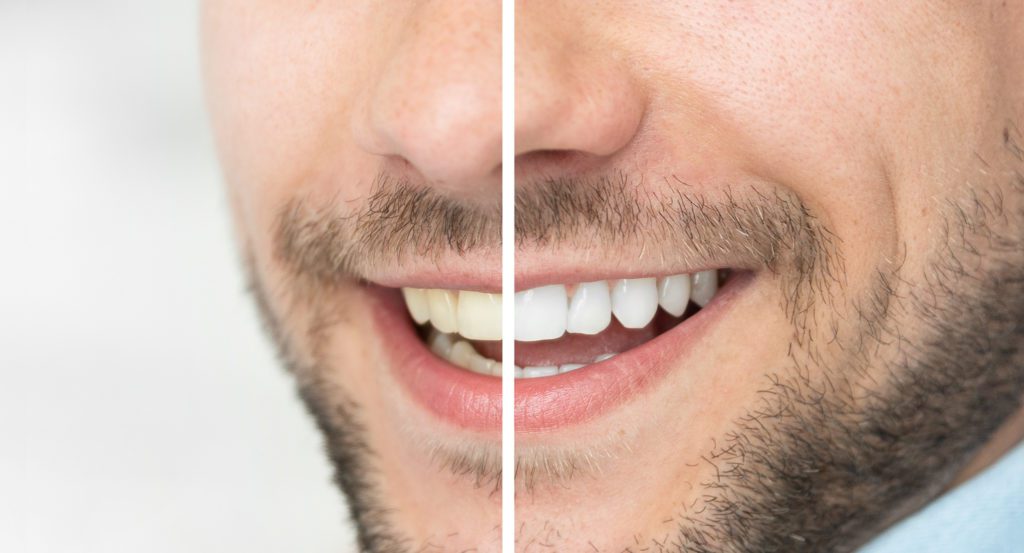People spend millions of dollars on whitening treatments to brighten their smiles every year. A white smile instills confidence and brightens a room, so it is a common desire for many patients. There are many at-home and in-office whitening treatments, but some may wonder if this process can harm your teeth.
According to the American Dental Association (ADA), at-home and professional whitening treatments can be safe and effective options to brighten your smile. But there are a few minor side effects that may occur when whitening your teeth. Yet, they are harmless if you know what to look for in your treatments.

How to Choose a Safe Treatment
The best first step in choosing a whitening treatment is to talk to your dentist. Your dentist can offer many options at home and in the office. They can also direct you to the best option for you. This is especially useful if you have any tooth health issues.
Your dentist may need to address problems like tooth decay or gum disease before using these treatments. Certain restorative therapies may alter the effectiveness of whitening options, which is why your dentist will be your best resource.
If you are using an at-home treatment, you can look for the ADA Seal of Acceptance to ensure that your product is safe for your teeth. The seal means that the ADA has reviewed the products for their safety and effectiveness and approved them.
While using these treatments, following the directions listed on the product is crucial. Each product is different, so they will have different usage descriptions. Incorrect usage and handling can result in unwanted side effects or irritation.
Side Effects of Whitening Treatments
Because of the chemicals in most whitening products, you can experience mild irritation or sensitivity in your teeth and gums.
Bleaching products might cause tooth sensitivity, but it can resolve itself. The inner portion of the tooth—the pulp—can become inflamed when exposed to the common chemicals in whitening kits. The sensitivity effect is often mild. The intensity of this symptom may depend on the length of the teeth’s exposure to the treatment and the amount of hydrogen peroxide in the product.
Your dentist can provide options to reduce sensitivity. But you can always reduce the time the whitening treatment is on your teeth or switch to a toothpaste for sensitive teeth. These efforts can relieve this symptom too.
Gum irritation is another common effect that can occur with whitening treatments, especially if the chemicals get on your gums. If you opt for a professional whitening with your dentist, you are less likely to get any of this gel on your gums and notice this issue. When using a whitening kit at home, avoid contact with your gums to avoid this symptom. The side effects are often minimal and will fade on their own.
The effects of whitening treatments are mild, making them safe and easy ways to enhance the look of your teeth.
